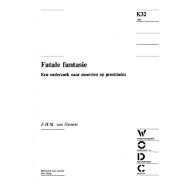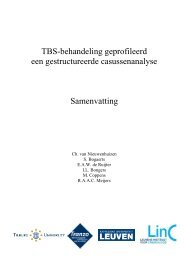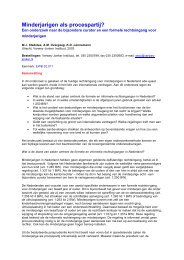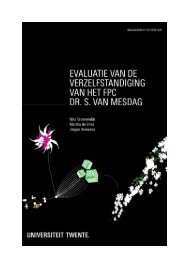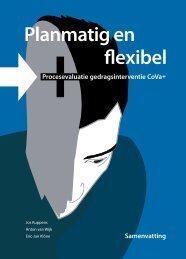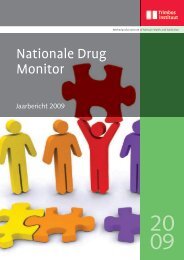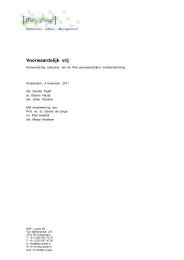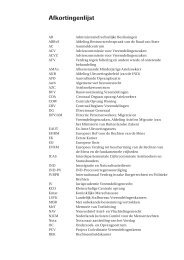Tienerseks; vormen van instrumentele seks onder tieners - WODC
Tienerseks; vormen van instrumentele seks onder tieners - WODC
Tienerseks; vormen van instrumentele seks onder tieners - WODC
Create successful ePaper yourself
Turn your PDF publications into a flip-book with our unique Google optimized e-Paper software.
The literature partially confirms such shifts in sexual behaviour and sexual morals. However,the shifts are small: in 1995 the age at which half of the youth experienced sexual intercoursewas 17.7; in 2005 it was 17.3. The increase in the percentage of youth with sexual experienceis found in particular among the older group of teenagers (from the age of 15) and less soamong youth between the ages of 12 and 14. Sexual behaviour on the Internet has unarguablyincreased, simply because the use of the Internet by young people has increased explosivelyin the past ten years. It is unknown to what extent sex in exchange for money or anotherreward and participation in sex parties have increased in the past ten years. Not much isknown either about shifts in how sexuality is experienced. However, compared to ten yearsago, young people nowadays do think more permissively about sex without emotionalinvolvement. In 1995 one in six schoolboys and schoolgirls felt this to be all right; in 2005this figure had increased to one in four.4) Does such behaviour and perception correlate with experiences with sexual abuse orviolence and any other risks?There is no hard evidence for a correlation between experience with forms of instrumentalsex or the perception thereof and experience with sexual violence. However, there are variousindications that suggest a connection. For example, there is abundant evidence that youngpeople who have had sex at some point in exchange for money or another reward also moreoften experienced sexual violence. Due to the correlational character of such connections theexperiences with paid sex could possibly be a reaction to sexual abuse. Literature hasfrequently shown that sexual abuse in childhood is connected with sexually acting outbehaviour during adolescence.Specific risks are attached to sexual behaviour on the Internet, which possibly increase thechance of sexual violence. For example, on the Internet it is always possible to make arecording when someone shows some kind of sexual behaviour in front of a webcam. In thisway the other gets hold of material with which (s)he can exert pressure to obtain more orincreasingly explicit images of sexual acts. Furthermore, risks are attached to dating via theInternet. It is very well possible that people present themselves very differently from whothey really are and that on a date they turn out to be adults instead of peers.Finally, theory and empiric evidence show that previous experiences with instrumental sex(or the assumption thereof) sometimes make it harder to refuse such contacts in the future, inparticular for girls. When girls have at some point participated in instrumental sexualactivities voluntarily, it is sometimes expected or even demanded from them that they will dothis again, or with others. It requires much more tenacity from these girls to refuse to repeatsexual acts than from girls who have never engaged in them before. Field experts in the areaof sexual offences indicate as well that offenders sooner project their own responsibility ontothe victim when it is (assumed) common knowledge that she would readily perform certainsexual acts. They then claim that the girl ‘wanted it too’.



